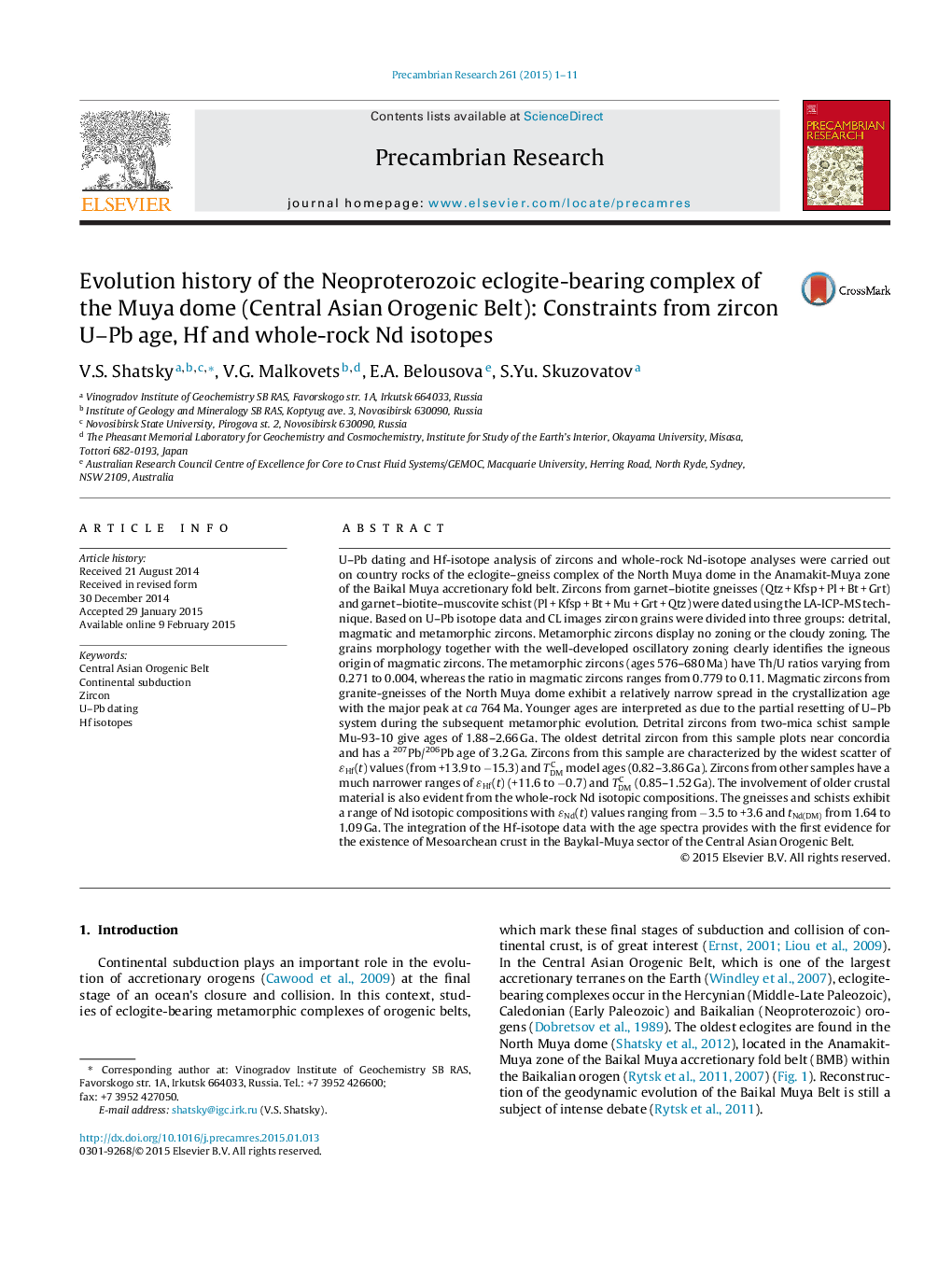| کد مقاله | کد نشریه | سال انتشار | مقاله انگلیسی | نسخه تمام متن |
|---|---|---|---|---|
| 4722709 | 1639614 | 2015 | 11 صفحه PDF | دانلود رایگان |

• The isotope data point to a heterogeneous structure for the North Muya dome.
• Zircons provide the first evidence of Mesoarchean crust in the Baykal-Muya belt.
• HP/UHP complex of the Muya dome marks the Neoproterozoic continental collision zone.
U–Pb dating and Hf-isotope analysis of zircons and whole-rock Nd-isotope analyses were carried out on country rocks of the eclogite–gneiss complex of the North Muya dome in the Anamakit-Muya zone of the Baikal Muya accretionary fold belt. Zircons from garnet–biotite gneisses (Qtz + Kfsp + Pl + Bt + Grt) and garnet–biotite–muscovite schist (Pl + Kfsp + Bt + Mu + Grt + Qtz) were dated using the LA-ICP-MS technique. Based on U–Pb isotope data and CL images zircon grains were divided into three groups: detrital, magmatic and metamorphic zircons. Metamorphic zircons display no zoning or the cloudy zoning. The grains morphology together with the well-developed oscillatory zoning clearly identifies the igneous origin of magmatic zircons. The metamorphic zircons (ages 576–680 Ma) have Th/U ratios varying from 0.271 to 0.004, whereas the ratio in magmatic zircons ranges from 0.779 to 0.11. Magmatic zircons from granite-gneisses of the North Muya dome exhibit a relatively narrow spread in the crystallization age with the major peak at ca 764 Ma. Younger ages are interpreted as due to the partial resetting of U–Pb system during the subsequent metamorphic evolution. Detrital zircons from two-mica schist sample Mu-93-10 give ages of 1.88–2.66 Ga. The oldest detrital zircon from this sample plots near concordia and has a 207Pb/206Pb age of 3.2 Ga. Zircons from this sample are characterized by the widest scatter of ɛHf(t ) values (from +13.9 to −15.3) and TDMC model ages (0.82–3.86 Ga). Zircons from other samples have a much narrower ranges of ɛHf(t ) (+11.6 to −0.7) and TDMC (0.85–1.52 Ga). The involvement of older crustal material is also evident from the whole-rock Nd isotopic compositions. The gneisses and schists exhibit a range of Nd isotopic compositions with ɛNd(t) values ranging from −3.5 to +3.6 and tNd(DM) from 1.64 to 1.09 Ga. The integration of the Hf-isotope data with the age spectra provides with the first evidence for the existence of Mesoarchean crust in the Baykal-Muya sector of the Central Asian Orogenic Belt.
Figure optionsDownload as PowerPoint slide
Journal: Precambrian Research - Volume 261, May 2015, Pages 1–11